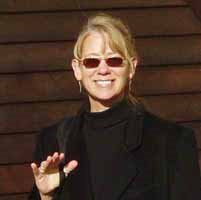
Friday, February 27, 2009
I'm proud to be an Okie from Muskogee

Sunday, February 22, 2009
Which ad solicited the highest response?

Friday, February 20, 2009
I have succumbed to email marketing

And the worst part is that it was Martha Stewart.
Sunday, February 15, 2009
Branding Ooligan Press
Friday, February 13, 2009
You can reach me at...
Sunday, February 8, 2009
A little perspective on book production

Friday, February 6, 2009
Ooligan Press released new title
Do Angels Cry? Tales of the War
by Matko Marušić
This collection of short stories offers an intimate view of the 1991 war in Croatia. Each story presents a different perspective of struggle and devotion to country during a time of war. A father talks his son out of building a bomb. An older man struggles to contribute in some way to the war effort. A doctor and his hospital are liberated at the end of the war. A couple and their young daughter are finally allowed to return to their hometown of Split.
Marušić captures the essence war—not the war fought on the battlefield, but the struggles at home, in the small-town streets, and in the daily lives of citizens. His spare language and vivid images illuminate the war not found in history books.
Do Angles Cry? is a new release by Ooligan Press, the student-run trade press at Portland State University. For more information about all the titles available from Ooligan, visit www.ooliganpress.pdx.edu
ISBN: 978-932010-23-7
5½˝ x 8½˝, softcover
160 pages
$14.95
For more information: ooliganmarketing@pdx.edu
Matko Marušić was born in Split, Croatia, in 1946. Matko Marušić’s other writings include a novel, a collection of short stories for children, and two additional collections of short stories for adults. Do Angels Cry? Tales of the War was originally published in Croatia and Great Britain in 1996. A preface, written by Dr. Stanimir Vuk-Pavlovic, has been added for the American edition.
This book is about the facet of the human price of the war…Yet, this book tells the simple truth of the ordinary people caught in extraordinarily desperate situations when choices are few and all are bad. They are the response to the statement, “What is not worth dying for, is not worth living for.”
— Dr. Stanimir Vuk-Pavlovic, Hematology/Oncology and Preventative Medicine, Mayo Clinic
Sunday, February 1, 2009
Can you trust online reviews?


